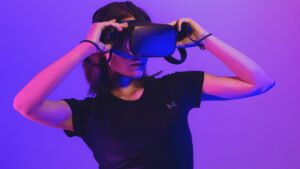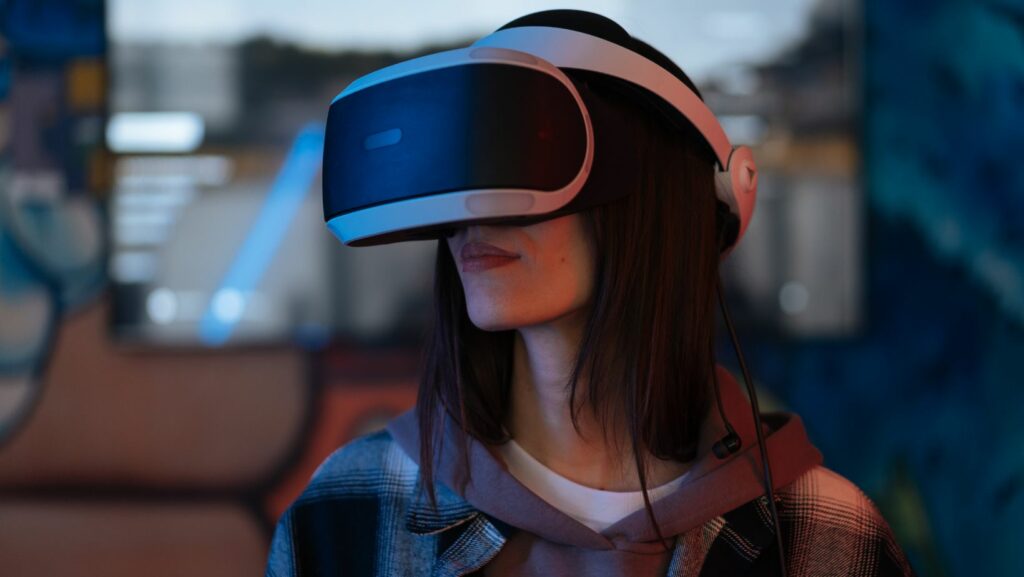Immersive VR experiences are transforming the way we interact with digital content, pushing the boundaries of reality and fiction. They’re not just about gaming anymore; they’re reshaping industries, from education to healthcare, and offering unparalleled opportunities for engagement and exploration.
This revolution is not happening in a vacuum. Behind every thrilling VR experience, there’s a blend of cutting-edge technology and creative brilliance. So, let’s dive into the fascinating world of immersive VR experiences, exploring their potential, their impact, and the exciting future they promise.
Immersive VR Experiences
History of Virtual Reality
 Envisioning an alternate reality began in the late 20th century, with first attempts to create simulated experiences echoing back to the 1950s. Sensorama, a pioneer VR venture by Morton Heilig, came into existence in 1962. By the 1990s VR stepped into the commercial realm, courtesy of companies like Sega, Nintendo, and Sony. However, due to high costs and technology limitations, initial VR efforts lacked appeal and faded.
Envisioning an alternate reality began in the late 20th century, with first attempts to create simulated experiences echoing back to the 1950s. Sensorama, a pioneer VR venture by Morton Heilig, came into existence in 1962. By the 1990s VR stepped into the commercial realm, courtesy of companies like Sega, Nintendo, and Sony. However, due to high costs and technology limitations, initial VR efforts lacked appeal and faded.
In the early 2000s, VR saw rekindled interest, with the tech boom acting as a catalyst. Start-ups like Oculus Rift, acquired by Facebook in 2014, fired the VR revolution, paving the path for today’s immersive experiences. With advancements, VR’s impact has grown, initially interesting gamers but slowly finding acceptance across various sectors – education, healthcare, and more.
Technological Advances in VR
Technological progression drastically transformed VR’s intricacies over time. The advent of head-mounted displays (HMDs) enhanced user immersion and propelled VR’s presence. Breakthroughs in positional tracking and haptic feedback also greatly upped the immersive quotient, with users not just observing, but also interacting with the virtual world.
Graphical enhancements, another critical advancement, helped weave convincing realities. High-definition visuals, coupled with improved latency and frame rates, made VR experiences smoother and realistic. Sophisticated software algorithms also contribute to expand VR’s portrayal of the real-world environment, influencing the rise of immersive VR experiences.
Key Components of Immersive VR Experiences
Visual Fidelity
 Visual fidelity forms the cornerstone of immersive VR experiences. It refers to the visual quality of the virtual environment, focusing on graphical enhancements that include high resolution, color saturation, light and shadow effects, and realistic textures. For example, games like ‘Half-Life: Alyx’ vividly showcase visual fidelity, where users navigate a detailed and lifelike virtual world. High visual fidelity doesn’t just please the eye; it enhances the user’s immersion in VR by creating a believable virtual world.
Visual fidelity forms the cornerstone of immersive VR experiences. It refers to the visual quality of the virtual environment, focusing on graphical enhancements that include high resolution, color saturation, light and shadow effects, and realistic textures. For example, games like ‘Half-Life: Alyx’ vividly showcase visual fidelity, where users navigate a detailed and lifelike virtual world. High visual fidelity doesn’t just please the eye; it enhances the user’s immersion in VR by creating a believable virtual world.
Audio Immersion
Audio immersion, another vital component, provides a sense of spatial awareness in VR experiences. It involves the use of three-dimensional (3D) sound techniques such as binaural audio, ambisonics, and object-based audio. These techniques allow users to hear sounds from various directions, matching their movements within the virtual environment. An instance can be found in VR applications like ‘Tilt Brush’ where users not only visualize their creations but also enjoy spatial, musical soundscapes that respond to their art in real-time.
The Impact of Immersive VR on Various Industries
Education and Training
 Immersive VR reshapes the landscape of education and training. It presents an enticing alternative to conventional teaching methods. Complex subjects transform into 3D interactive models, enhancing understanding and retention. Consider geography lessons, where students journey virtually around the globe. They explore different climates, terrains, and historical landmarks without leaving their classroom. Pilot training serves as another prime example.
Immersive VR reshapes the landscape of education and training. It presents an enticing alternative to conventional teaching methods. Complex subjects transform into 3D interactive models, enhancing understanding and retention. Consider geography lessons, where students journey virtually around the globe. They explore different climates, terrains, and historical landmarks without leaving their classroom. Pilot training serves as another prime example.
Healthcare
Cutting-edge innovation is seen in healthcare through the integration of immersive VR. Its applications stretch from medical training to patient treatment and recovery. Medical practitioners rehearse complicated surgeries using accurate 3D models, reducing the risk during actual surgery. Meanwhile, patients experience a decrease in anxiety levels when VR simulates calming environments during stressful procedures such as MRIs.
Entertainment and Gaming
Immersive VR is almost synonymous with entertainment and gaming. This technology propels gaming into another dimension by creating intense and extremely realistic experiences. Gamers are transported right into gameplay, battling enemies, scaling buildings, or solving puzzles as if they are physically present. Films and other entertainment platforms have also adopted immersive VR, beckoning audiences into their world. Imagine watching a movie as an active participant rather than a passive observer, or attending concerts and art exhibitions from the comfort of one’s living room.

